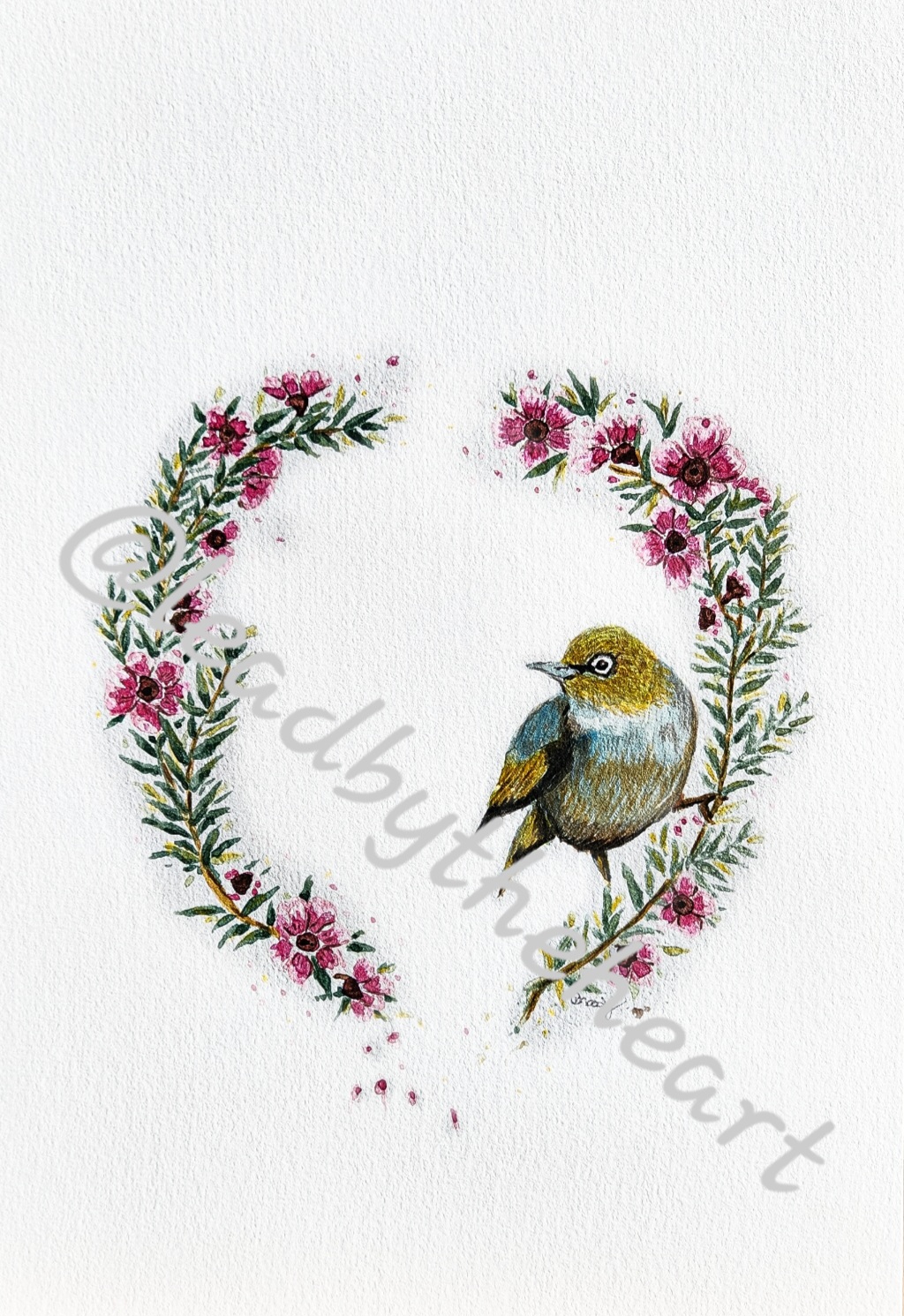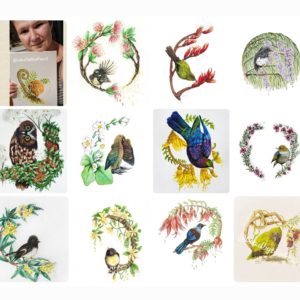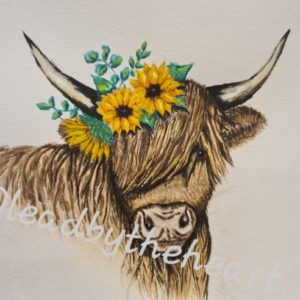The silvereye/tauhou – also known as the wax-eye, or sometimes white eye – is a small and friendly olive green forest bird with white rings around its eyes. These cool little birds were ‘self-introduced’ to New Zealand in 1800s and made the forest their home. The waxeye’s Māori name is tauhou, which means ‘stranger’ or more literally, ‘new arrival’. These cute little guys are not suffering like some of the other native birds and numbers are remaining stable.
This little waxeye has is sitting in a wreath of Crimson Manuka. Mānuka or kahikātoa was origionally called ‘tea tree’ by Captain Cook, is a rather variable plant ranging from flat creeping forms and small shrubs to tall trees (up to 10 m tall). Although variable, all the forms of this species are unified by their sharp-tipped leaves, large, solitary white or pink-flushed flowers, with distinctive short, dark red stamens, and persistent greyish-white nut-like capsules.
- The hard, red wood of mānuka/kahikātoa was widely used by Māori for everything from paddles, weapons, spade blades, bird spears and mauls to house building. The bark was used for making water containers and the inner bark as a waterproof layer for roofing.
- Captain Cook and early settlers called mānuka/kahikātoa ‘tea tree’ because they used the green leaves to make a substitute for tea. They also brewed twigs from this plant with rimu to make beer.
- Mānuka/kahikātoa flowers smell very sweet and they provide an important source of pollen and nectar for native bees, flies, moths, beetles and geckos.
Did you know?
Study’s show that mānuka/kahikātoa pollen, and honey derived from it, contains powerful insecticides and anti-bacterial agents. Mānuka/kahikātoa oil is now sold in New Zealand and overseas in various cosmetics and health care products. Manuka honey from New Zealand is sought after worldwide and some refer to this honey as the “Liquid Gold”.
Māori call it a taonga or ‘treasure’ and found a staggering amount of uses for it; from food to traditional medicinal uses, and all manner of tools and artefacts. Infusions made with the leaves were used to reduce fevers and treat stomach and urinary problems. Gum produced from the tree was used as a moisturiser for burns, and to ease coughing. Decoctions from the bark were used as a sedative, a mouthwash, and to treat diarrhoea and fever.
I paired these two together because, although both are not endangered they are well-known popular icon’s for New Zealand, and because I view both as treasure’s in their own right I felt they belonged together.






Reviews
There are no reviews yet.